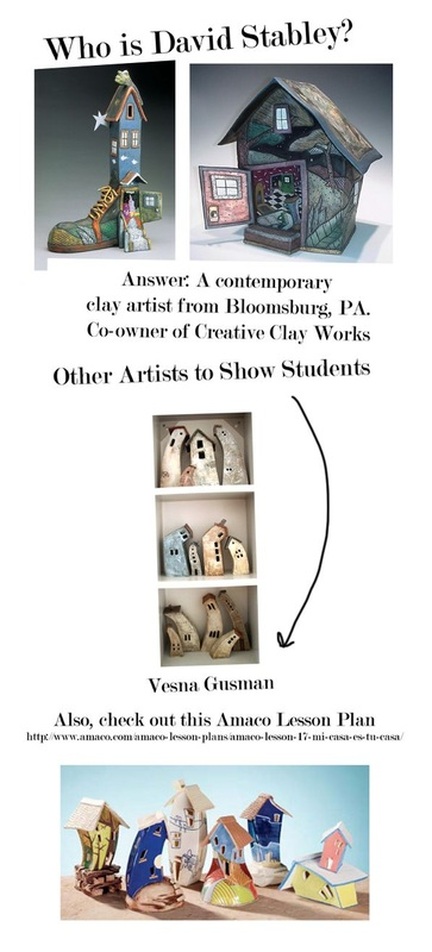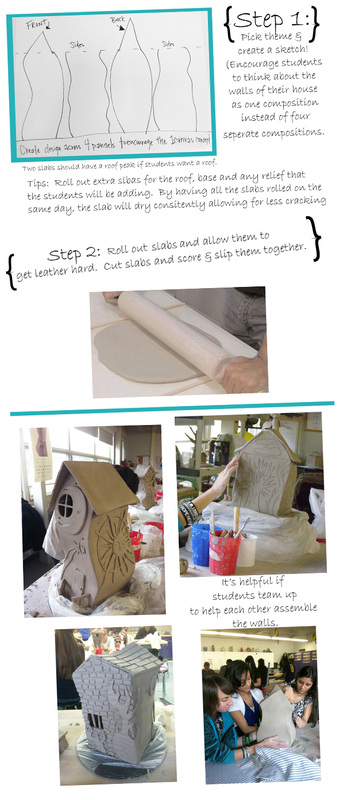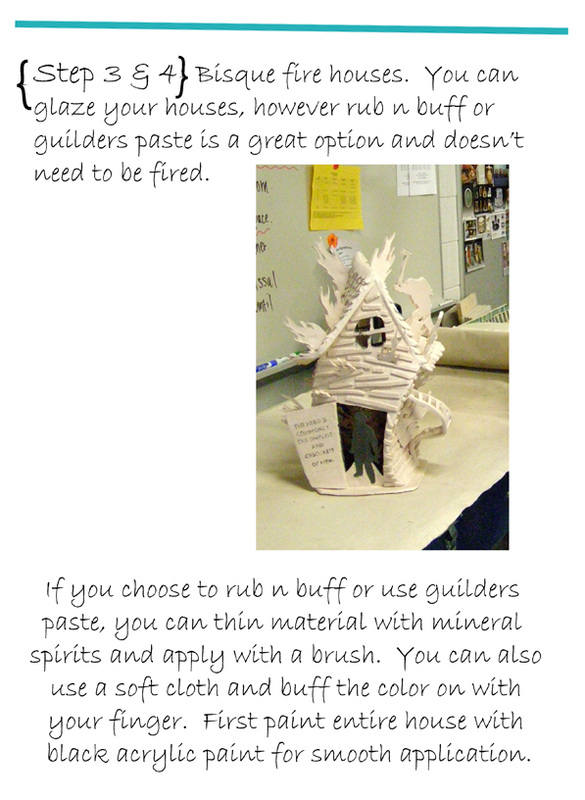|
More about the Project: {Provided by Mrs. Jaime Cream!}
Project Objectives: By the end of the unit, the students will be able to: 1. Students learn to make whimsical houses based on David Stabley’s technique. 2. Define relative vocabulary
3. The lesson incorporates art history, aesthetics, and criticism with a hands on activity. 4. The lesson focuses on various ceramics techniques and important composition and design elements essential to creating a uniquely designed house from; fundamental technical skills for using specialty finishing products to create non-traditional surfaces; and self expression. The students will… 1. Use the slab technique to create a large house form. Even slabs, scoring & slip, leather hard consistency will be stressed. 2. Attach levels of clay and extrusions by scoring and using vinegar. 3. When the clay is leather hard, carve patterns, texture, and detail using a variety of ceramic carving tools. A dry paintbrush is used to brush away the clay residue that results from the carving. 4. Be sure that the clay does not become too hard throughout the carving process. Since it may take several class periods, students should wrap their pieces in damp paper towels and place them in plastic bags to prevent drying. 5. After drying and firing, the houses are painted with black (or any dark color like purple or navy blue) latex house paint. 6. Using clean, small rags (polyester works better than cotton), apply the Rub n’ Buff. Wrap the small rag around the index finger and squeeze a very small amount of color onto the rag. Rub it gently on the surface of piece. Cotton swabs can be used to apply Rub n’ Buff to areas that are hard to reach. The more rubbing, the less intense the color. Start from the back relief and work toward the foreground. The colors dry in a minute or two and can be overlaid with other colors. The colors seal themselves and a sealer is not needed. Comments are closed.
|
Studio ArtThis is full year foundation course that will aid in your understanding and creating a wide variety of 2-D and 3-D artwork.
Course ExpectationsWeekly
|




